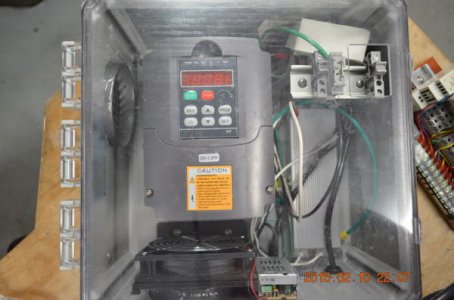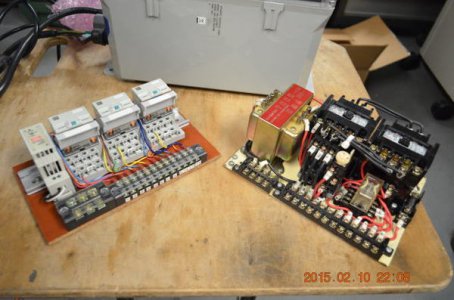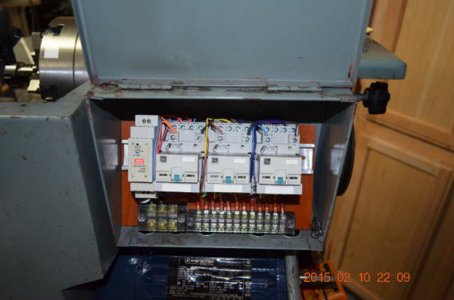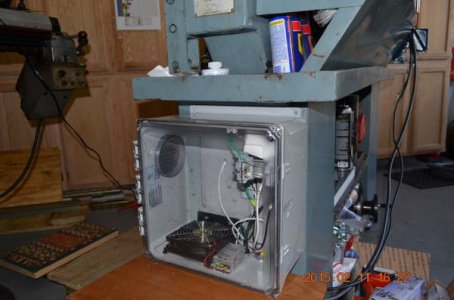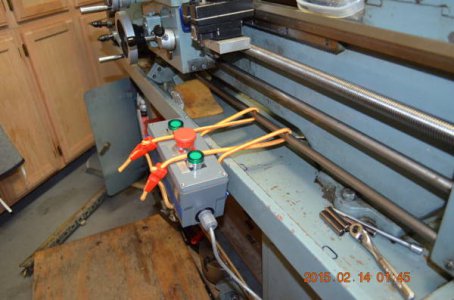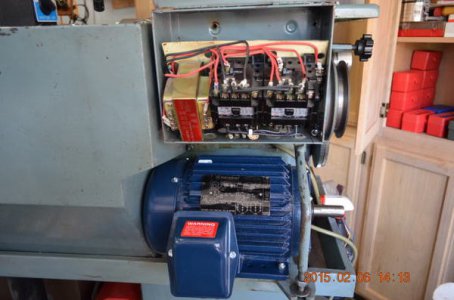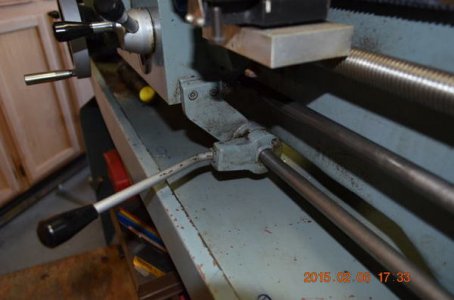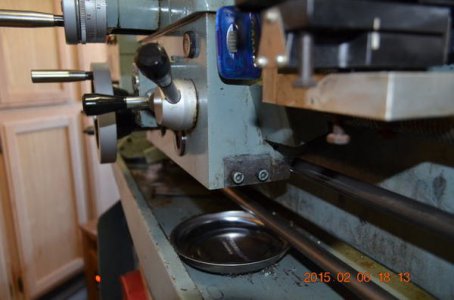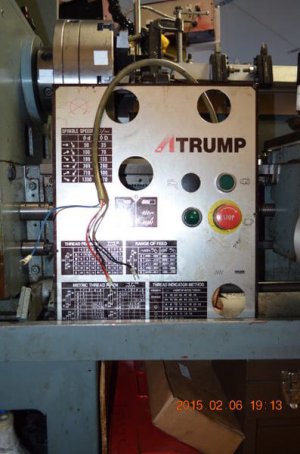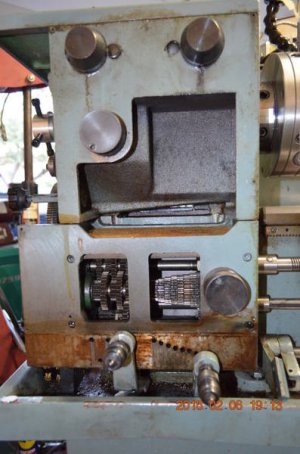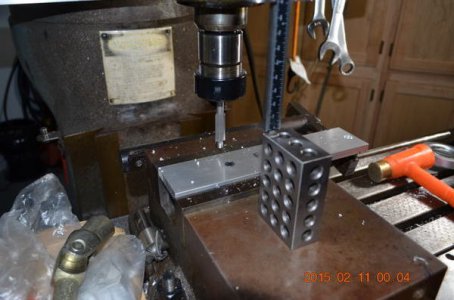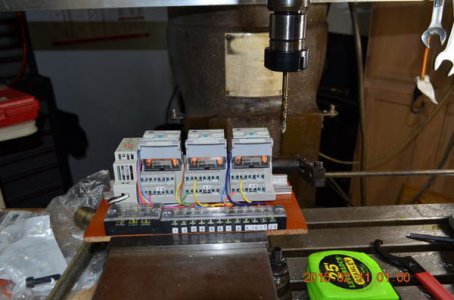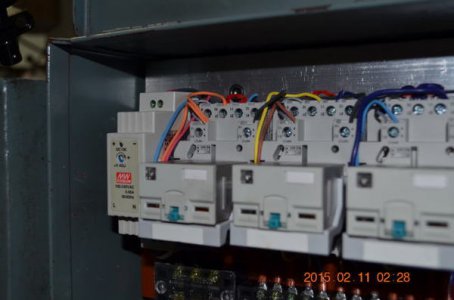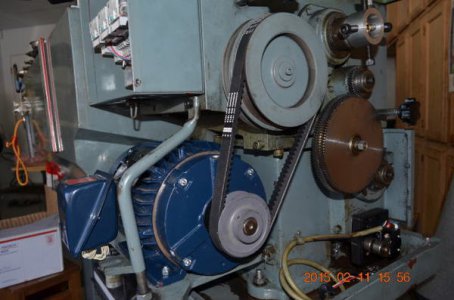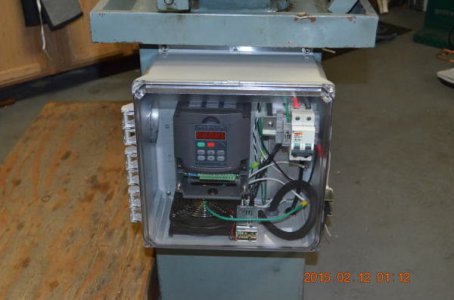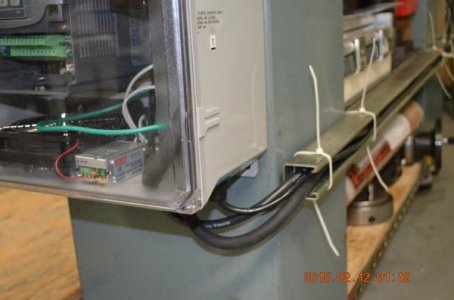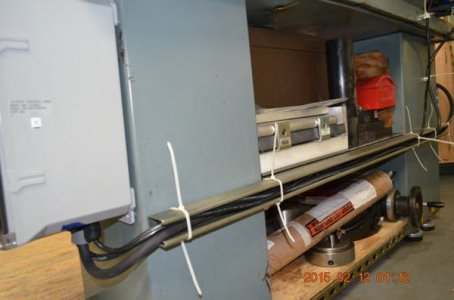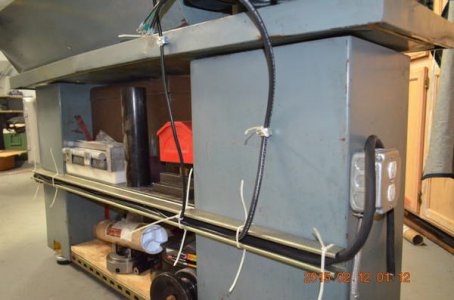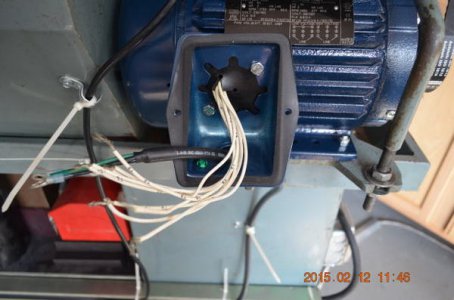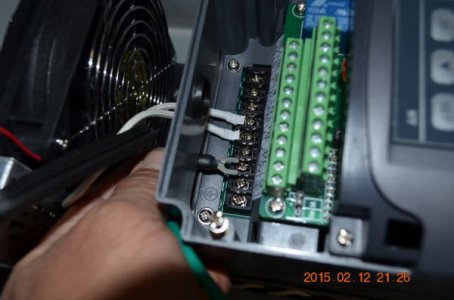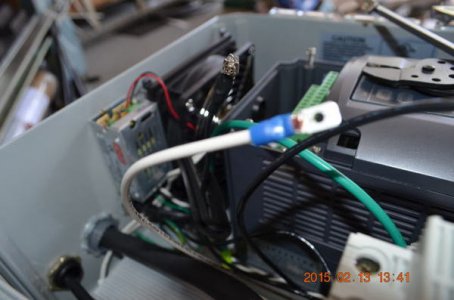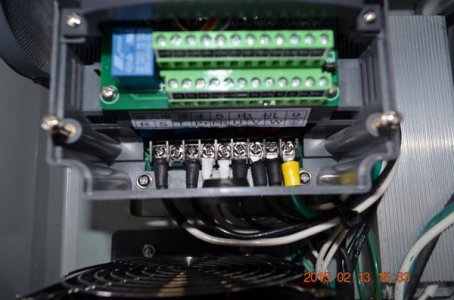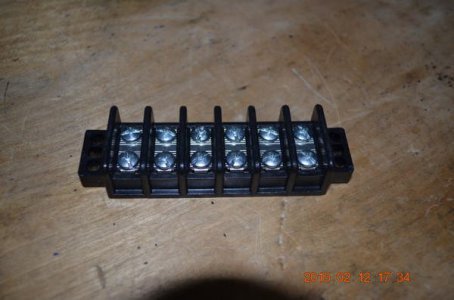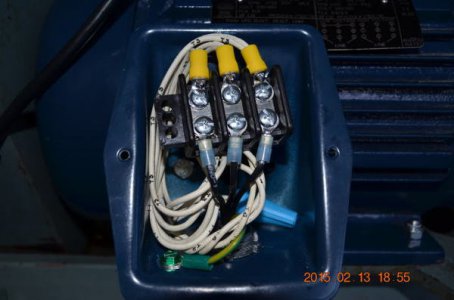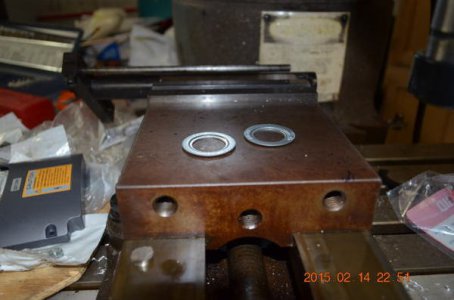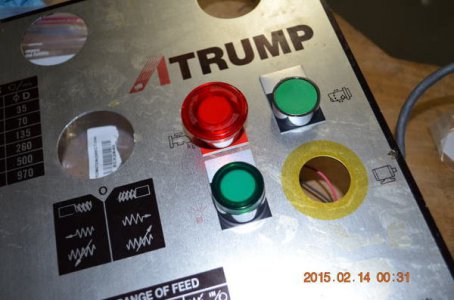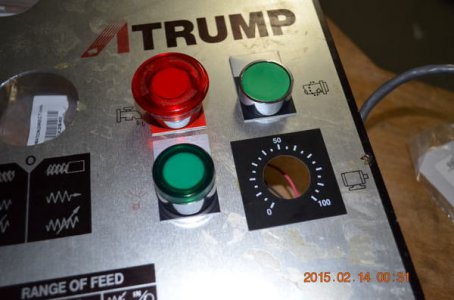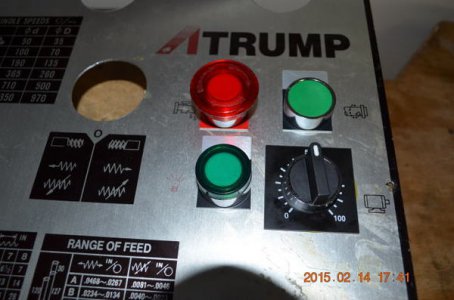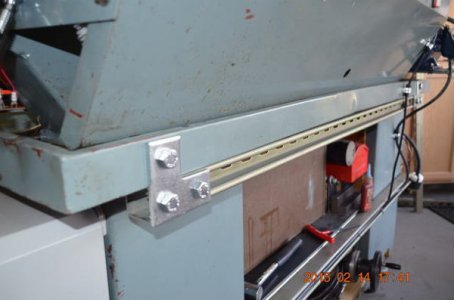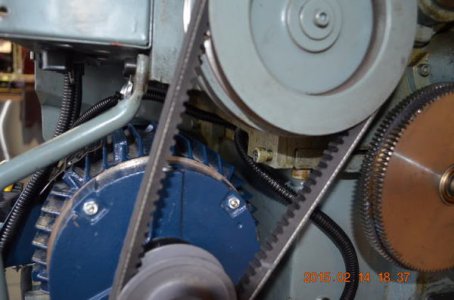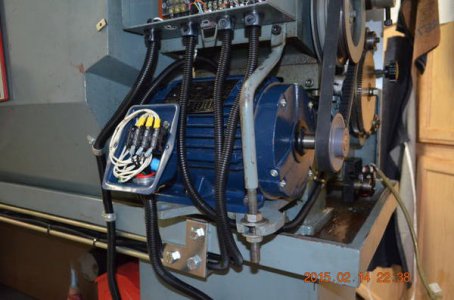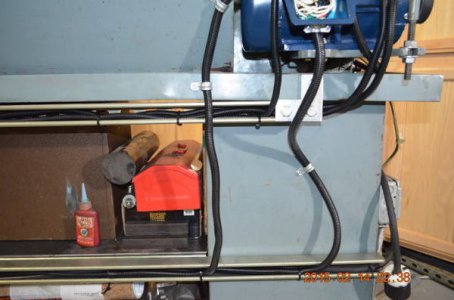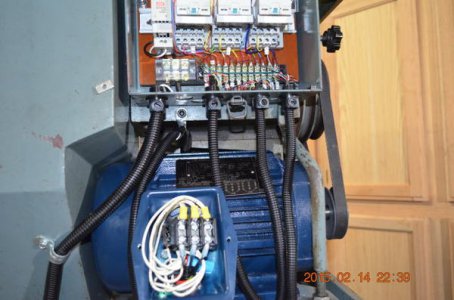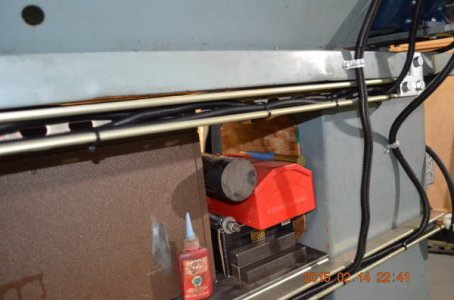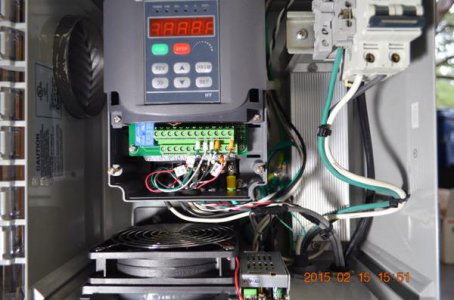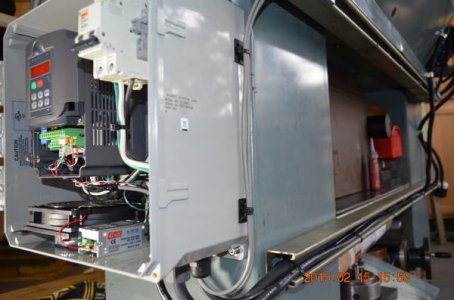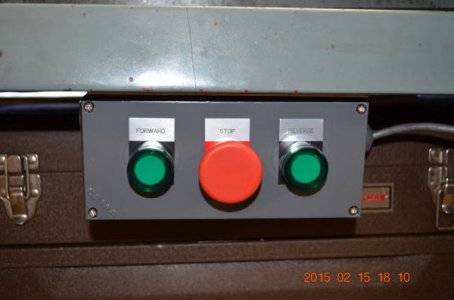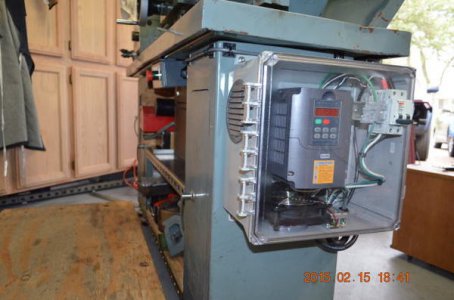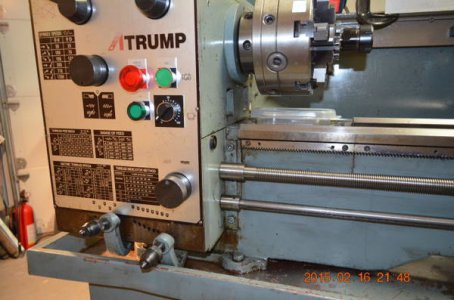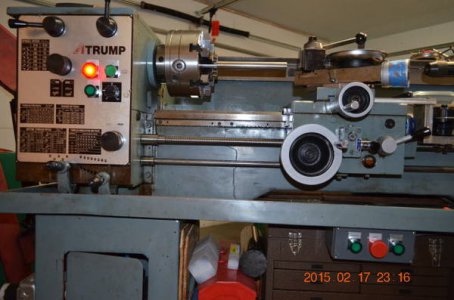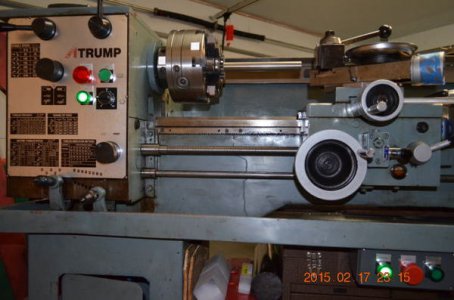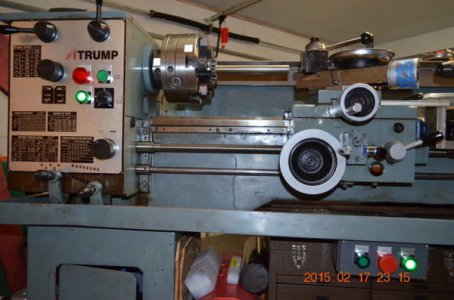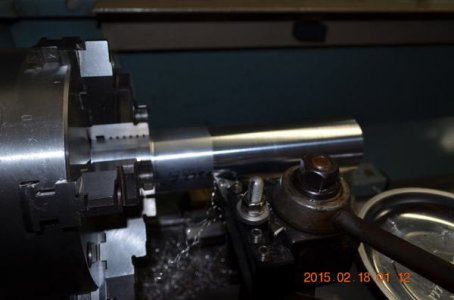- Joined
- Jul 13, 2014
- Messages
- 1,054
To appreciate the conversion, here is how the old set up was.
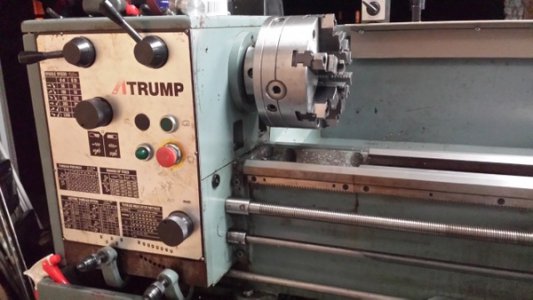
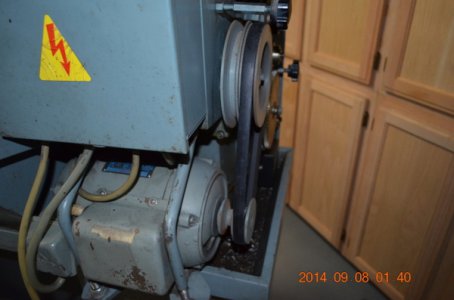
As I alluded on this thread, last entry, that the decision has been made, 3P and VFD is it. http://www.hobby-machinist.com/threads/3p-vfd-or-dc-motor.30710/ The conversion is done, done, but I will post in installment, will start with the details on what made up the conversion
First of all this conversion is a direct credit to a forum member. His generosity and kindness, and follow through by his daily email as I went through the installation, made it all possible. I am talking about one of own, mksj. Mark not only provided the guidance, he volunteered to build the kit and all I had to do was interface the boxes, and basically just run the cables and hook up the connectors. He put together a nice 16 page manual complete with theory of operations, schematic diagram, wiring diagram, parts breakdown, and VFD configuration set up optimized for maximum performance.
When I said he built the kit, I mean he built the entire kit, here are the pictures of the kit as it came in. I could not thank him enough for his work. Almost all the components he used are from Automation Direct, I defer to him if you folks are interested in knowing the detail components and the rationale for the selection.
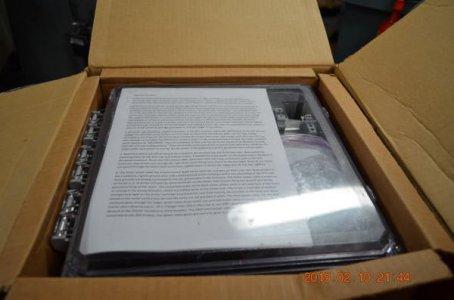
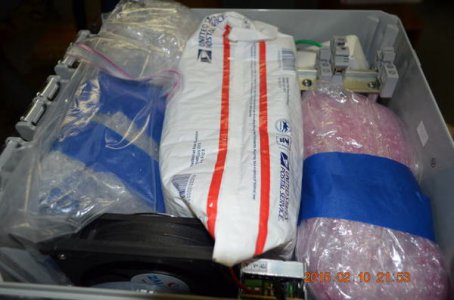
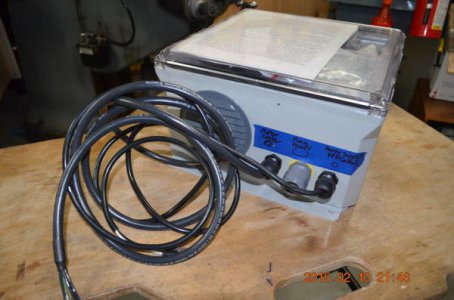
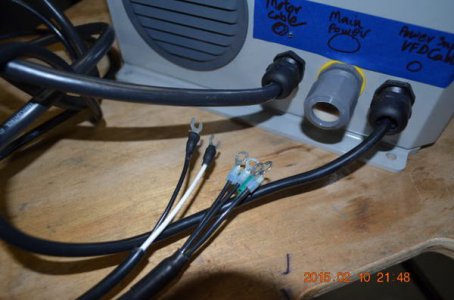
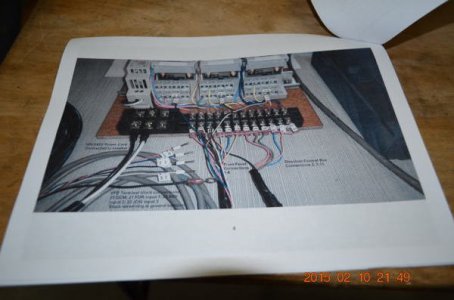
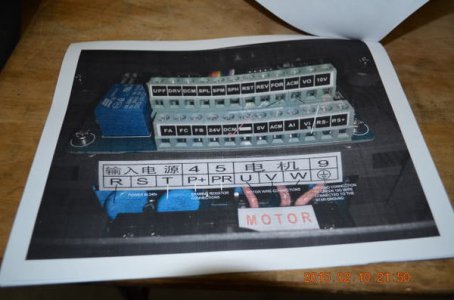
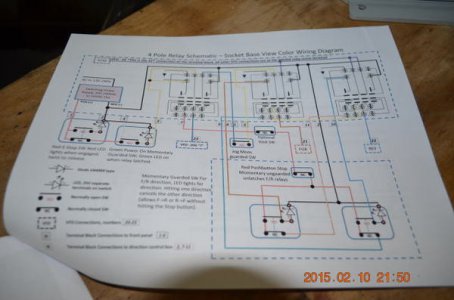
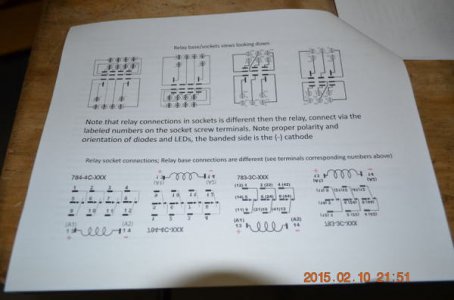
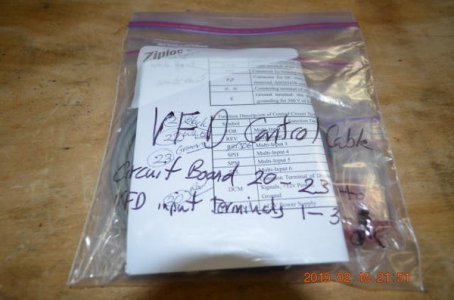
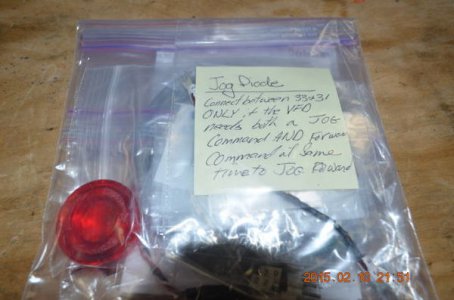
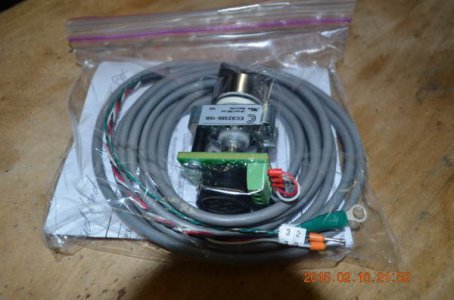
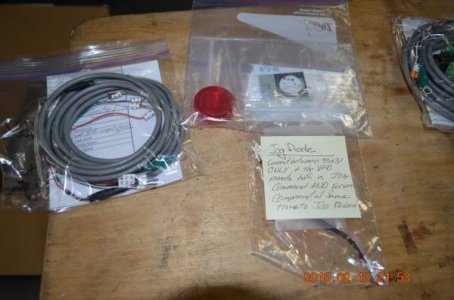
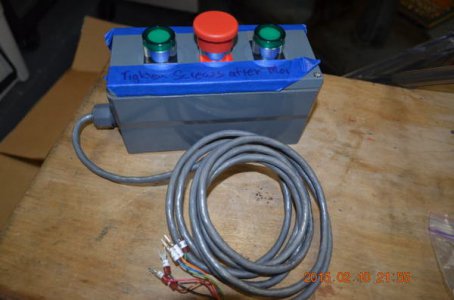
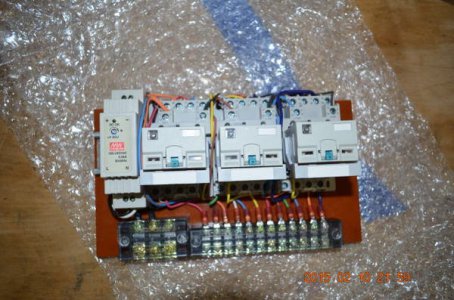
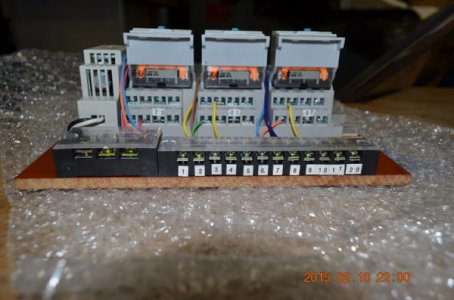
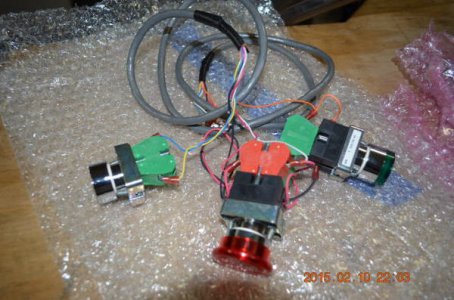
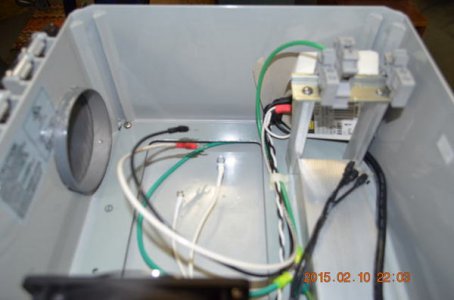
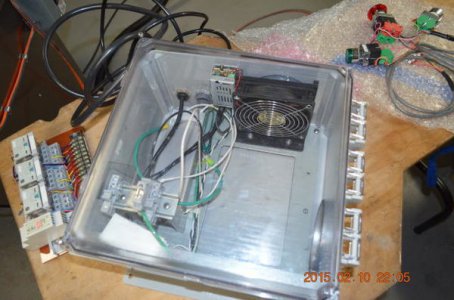
More pictures tomorrow, TinyPics is acting up on me and the site limited me to 20 pictures.
Enjoy.


As I alluded on this thread, last entry, that the decision has been made, 3P and VFD is it. http://www.hobby-machinist.com/threads/3p-vfd-or-dc-motor.30710/ The conversion is done, done, but I will post in installment, will start with the details on what made up the conversion
First of all this conversion is a direct credit to a forum member. His generosity and kindness, and follow through by his daily email as I went through the installation, made it all possible. I am talking about one of own, mksj. Mark not only provided the guidance, he volunteered to build the kit and all I had to do was interface the boxes, and basically just run the cables and hook up the connectors. He put together a nice 16 page manual complete with theory of operations, schematic diagram, wiring diagram, parts breakdown, and VFD configuration set up optimized for maximum performance.
When I said he built the kit, I mean he built the entire kit, here are the pictures of the kit as it came in. I could not thank him enough for his work. Almost all the components he used are from Automation Direct, I defer to him if you folks are interested in knowing the detail components and the rationale for the selection.


















More pictures tomorrow, TinyPics is acting up on me and the site limited me to 20 pictures.
Enjoy.
Last edited:

